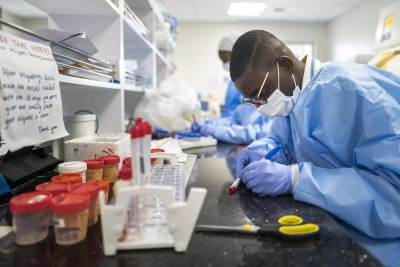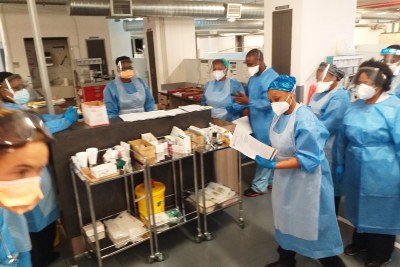-
East Africa: Health System Inequalities Drive Antimicrobial Resistance
The Conversation Africa, 6 April 2022
The COVID pandemic has exposed long-standing structural fault lines in societies - especially in health systems. These same inequalities also drive another major global health… Read more »
-
Uganda: We Need to Learn From the TB Epidemic
Observer, 29 March 2022
As countries around the world-- from Kenya to Canada, South Africa to Sweden--relish the prospect of an unofficial transition of COVID-19 from pandemic to endemic and start to ease… Read more »
-
Africa: 'Test and Treat' Is Being Used to Tackle HIV. Why Not TB?
The Conversation Africa, 23 March 2022
Worldwide, tuberculosis (TB) remains a significant cause of disease and deaths. Around 9.9 million people had the disease in 2020. The burden is higher in low- and middle-income… Read more »
-
Africa: Resistance to Antibiotics and Other Drugs a Global Concern
Africa Renewal, 2 February 2022
Labeling of drugs, prescriptions could help curb Africa's antimicrobial resistance Read more »
System Inequalities in East Africa Drive Antimicrobial Resistance
The Covid-19 pandemic has exposed long-standing structural fault lines in societies - especially in health systems. These same inequalities drive another major global health concern - antimicrobial resistance.
The World Health Organization defines antimicrobial resistance as the process by which microbes change over time and no longer respond to medicines. This makes infections harder to treat. It also increases the risk of disease spread, severe illness and death. Resistance of bacteria to antibiotics is especially worrying.
Global deaths from antimicrobial resistance are projected to increase from the current 700,000 a year to 10 million by 2050. These losses disproportionately affect the world's poorest and most vulnerable populations in low- and middle-income countries. For example, across sub-Saharan Africa, rates of deaths due to antibiotic resistance are 24 per 100,000 people. In high-income countries, the death rate is 13 per 100,000.
The fight against antimicrobial resistance must proceed in a way that tackles, rather than reproduces, existing health inequalities. To do so, more voices need to be heard, writes Alicia Davis, Blandina Mmbaga, Stephen Mshana and Tiziana Lembo for The Conversation.
InFocus
-
As of August 21, 2022, confirmed cases of Covid-19 from 55 African countries reached 12,126,067 while 373,195,217 vaccinations have been administered across ... Read more »
-
As the Covid-19 pandemic enters its third year, a group of mayors from the African continent have committed to improve city governance for health and wellbeing as well as to Read more »
-
Antimicrobial resistance poses a significant threat to humanity, health leaders have warned, as a study reveals it has become a leading cause of death worldwide. Hundreds of ... Read more »
-
Resistance to antibiotics leads to a situation in which previously treatable infections are becoming harder - and sometimes impossible - to treat. Without urgent action, the world ... Read more »

Testing for antimicrobial resistance (file photo).





